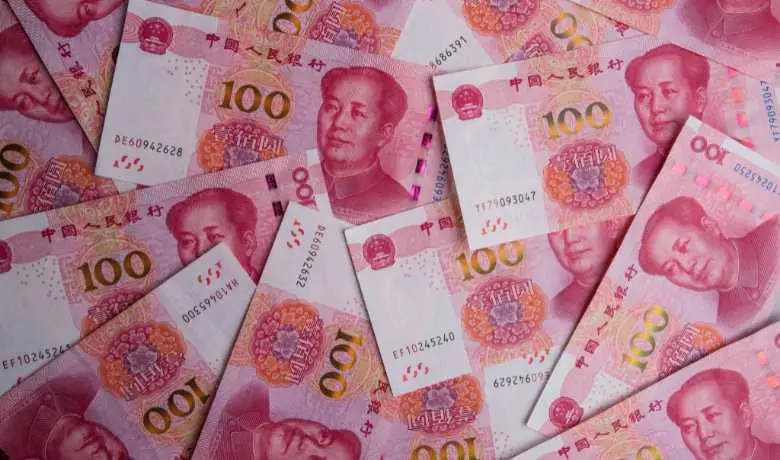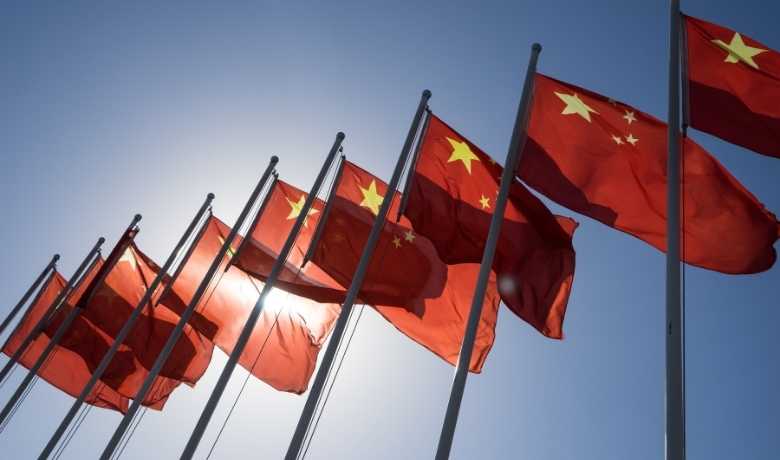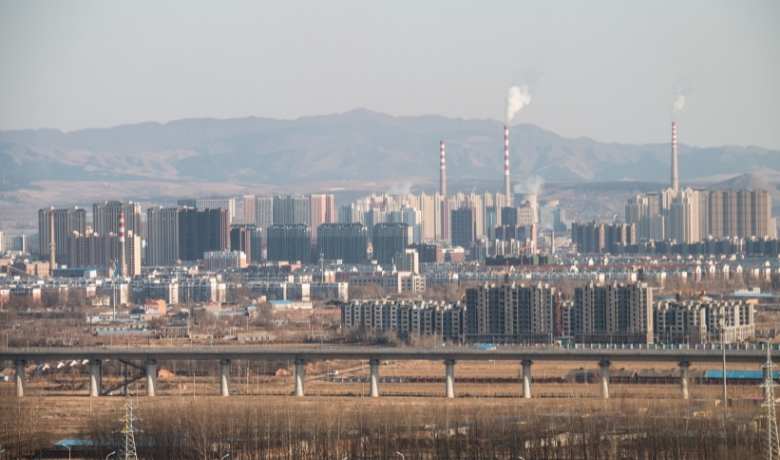Countries that remained neutral during the cold war are now considered third-world countries. Is China a third-world country? Let’s find out!
Many people mistake China for a third-world country, which it isn’t. China is classified as a second-world country, which is part of the Communist Bloc. It is also considered the largest developing country in the world.
Were you under the impression that China was a third-world country? You’ve come to the right page. Today, we’re going to discuss why China is a second-world country and other things you should know about this country’s economy. Keep reading to learn more.
Read Also: Is El Salvador A Third World Country? Exploring Developing Countries And Nations
Is China a Third World Country?
No, China isn’t a third-world country. China is a second-world country. This isn’t a term that you hear often, and to be fair, it’s pretty outdated. Any country that is considered second-world was once controlled by the soviet union. These countries have economies that are centrally-planned and one-part states.

However, that only sums up the original meaning of the term second-world country. Initially, this had to do with the country’s stance during the cold war. Yet, over the years, the definitions have changed, referring to how developed a country is. If you look at it this way, a second-world country is not as stable and developed as first-world countries, but is better off than third-world countries.
Even going by the modern definition of a second-world country, China is still classified as one. It may come as a surprise to people when they think about how large the economy in China is.
Read Also: Is Brazil a Third World Country?
Why Is China a Developing Country? Development Explained.
Any second-world country is considered a developing country. However, when people take a look a China’s economy, it seems like the country is developed and should classify as first-world. After all, it has one of the biggest economies worldwide and many millionaires and billionaires reside in China. So, why is it still considered a second-world country?

When you take a look at the wealth in China, it’s very unevenly distributed. While certain areas in the country are very developed, other parts have more poverty. To begin with, in order for a country to be considered first-world, it must have a gross national income of $12,000 USD per capita, however, China only has a GNI of $10,410.
There are still 373 million people living in poverty in China. A lot of people that are living in poverty in China are bringing home less than $5.50 USD a day.
Read Also: Is Colombia a Third World Country?
Uneven Economic Wealth in China
The wealth in China is very unevenly distributed. This is the main reason why the country struggles to move from a developing country to a developed country. First-world (developed countries) are focused on urbanization, and over 80 percent of the population will live in urban areas.

China isn’t there yet because the country isn’t widely focused on urbanization. Only 60 percent of the population lives in urban areas. Cities around the coastal areas of China have a better economy with more middle-class and wealthy people. The center of China has more rural areas, that don’t have a strong economy. Many people struggle with earning an income in these areas.
Many businesses in China still use poor-quality manufacturing, which puts a halt in the economy’s growth rate. The poverty levels in rural China also make a big impact on the economy because there isn’t money available to go towards consumption from local businesses.
One recent study showed that the top 1 percent of Chinese citizens hold over one-third of the country’s total wealth. In contrast, the bottom 25 percent hold less than 1 percent of the country’s wealth. This big gap between rich and poor is one of the main obstacles to China’s development.
Read Also: Is Egypt A Third World County?
What are Third World Countries?
A third-world country was once described as a country that remained neutral during the cold war. Each of these countries ended up having a poor economy. That is what a third-world country is considered in modern times. Any country that is considered third-world is a developing country. However, the economy is much different than a second-world country because:
- There is a lack of resources within the country to help boost the economy.
- There are very high poverty rates throughout the country.
- There is very unstable financial standing, causing businesses and residents across the country to be in a poor financial situation
There are currently 152 countries in the world that are considered the third world. That is over 80 % of the world’s population that’s living in poverty. The average GNI in third-world countries is $5,134 USD per capita.

What is China’s Unemployment Rate?
Every year statistics are taken to find out what the unemployment rate is in each country. China’s unemployment rate rarely exceeds 5 %. In 2022, the unemployment rate in China was recorded as 3.7 % and predicted to go down to 3.6 % in 2023 to 2027. The highest recorded unemployment rate in China recorded over the past ten years was in 2020 during the COVID-19 pandemic at 4.24 %.
Read Also: Is Haiti A Third World Country?
How Do China’s Employment Wages Affect Poverty Rates?
One thing that leads to very uneven wealth across China is that there is no set minimum wage for the country. Instead, every city has a different minimum wage. The wage class will ultimately depend on the economic state of the city. Therefore, rural areas with very little resources will have much lower minimum wages than cities with better economies.
In 2019, the recorded average salary in China was $13,231 USD. The region with the highest salary average was Bejing at $24,386 USD, while the lowest salary average was in Henan at $9,835 USD. People who work in IT, software, and information transmission typically earn the most in China, while people that work in the agriculture and fishing industry earn the least.

Should China Be Considered a Special Developing Country?
Even though China is classified as a second-world country, many people would argue that it’s already a developed country. When you put the uneven wealth distribution aside, there is a very big economy within China that is able to generate enough money to be considered developed.
When it comes down to it, the World Trade Organization offers more benefits to countries that are developing than it does to developed countries. There are people that believe China is taking advantage of these privileges from the World Trade Organization. Developing countries are offered more open trade in order to improve their economic growth.
Read Also: Is Afghanistan A Third World Country?
A lot of people believe that it’s not fair that a country with an economy like China can receive the same benefits that countries like Somalia and Malawi. Since countries are able to classify themselves when entering in the World Trade Organization, China always enters as developing.
This leads many people to blame China for putting a halt on third-world countries’ development. When China places itself in the same category, it reduces the amount of privileges that countries which really need them are able to receive.

Will China Become a Developed Country?
China isn’t that far off from becoming a developed country. After all, the country does have the second-largest economy and the largest military in the world. That being said, China is on the right path to moving out of the second-world category and becoming classified as developed.
There are strategic goals set in place to boost the economic stance of China. It is believed that between the years 2035 and 2050, China will become a developed country. They have put a lot of planning and work into economic and social development to allow people in the country to have a higher standard of living.
Economic Growth Rate
Between 2020 and 2035, it is predicted that China’s economic growth rate will be between 4.8 and 5.6 %. As the economy grows over the next decade or so, the wages that people in China receive will as well. The country also has plans to build a more innovative workforce, with more skilled and educated workers.
The country wants to have an average of 7 million university graduates enter the workforce on an annual basis. This plan will help to improve the labor growth rate and create more stable job positions for people in the country.

China State Council
China State Council is the supreme governing body of the People’s Republic of China. It consists of the Premier, a variable number of Vice Premiers, five State Councilors, and 29 ministers and chairs of commissions. The Secretary-General heads the General Office which handles day-to-day work in support of the State Council.
China’s Health System
China health system is a three-level system including the primary, secondary and tertiary levels. The primary health care level is the most basic and essential level, which is also the foundation of the whole health care system. The secondary health care level provides more specialized and comprehensive medical services. The tertiary health care level offers the most advanced and sophisticated medical services.
Word Bank And China
World Bank Group and World Bank support for China. The World Bank Group has supported China’s development over the past four decades through policy advice, analytic work, and financial assistance. The World Bank Group’s strategy in China is guided by the country partnership framework (CPF), which was jointly prepared with the government of China and approved by the World Bank Group Board of Executive Directors in July 2014.

Final Thoughts
Is China a developing country, or a third world country? China isn’t a third-world country. It is classified as a second-world country, or also known as a developing country. While China does have a very impressive and large economy, it only applies to certain areas of the country. There are still very high poverty rates in the rural areas of China, where resources aren’t as accessible.
Cities in the coastal regions of China have a much stronger economy. There are more job opportunities in IT, health care, sports, and more. This allows people to work jobs that have a steady schedule and regular pay. In rural areas, there is not as much opportunity to find work, and most of it is low paying, like fishing, farming, and agriculture work.
China does have a goal set in place to move from a developing country to a developed country by 2050. It already has a strong economy to work with, China just needs to put more focus on even wealth distribution. While there are many wealthy people in China, there are also many people living in poverty.
Human Development Index Ranking
| HDI Rank | Country | Human Development Index (HDI) | Gross national income (GNI) per capita |
|---|---|---|---|
| 1 | Norway | 1 | 66,494.00 |
| 2 | Ireland | 1 | 68,371.00 |
| 3 | Switzerland | 1 | 69,394.00 |
| 4 | Hong Kong, China (SAR) | 0.949 | 62,985.00 |
| 5 | Iceland | 0.949 | 54,682.00 |
| 6 | Germany | 0.947 | 54,682.00 |
| 7 | Sweden | 0.945 | 54,682.00 |
| 8 | Australia | 0.944 | 54,682.00 |
| 9 | Netherlands | 0.944 | 54,682.00 |
| 10 | Denmark | 0.94 | 58,662.00 |
| 11 | Finland | 0.938 | 48,511.00 |
| 12 | Singapore | 0.938 | 88,155.00 |
| 13 | United Kingdom | 0.932 | 46,071.00 |
| 14 | Belgium | 0.931 | 52,085.00 |
| 15 | New Zealand | 0.931 | 40,799.00 |
| 16 | Canada | 0.929 | 48,527.00 |
| 17 | United States | 0.926 | 63,826.00 |
| 18 | Austria | 0.919 | 56,197.00 |
| 19 | Israel | 0.919 | 40,187.00 |
| 20 | Japan | 0.919 | 42,932.00 |
| 21 | Liechtenstein | 0.917 | 131,032.00 |
| 22 | Slovenia | 0.917 | 38,080.00 |
| 23 | Korea (Republic of) | 0.916 | 43,044.00 |
| 24 | Luxembourg | 0.916 | 72,712.00 |
| 25 | Spain | 0.904 | 40,975.00 |
| 26 | France | 0.901 | 47,173.00 |
| 27 | Czechia | 0.9 | 38,109.00 |
| 28 | Malta | 0.895 | 39,555.00 |
| 29 | Estonia | 0.892 | 36,019.00 |
| 30 | Italy | 0.892 | 42,776.00 |
| 31 | United Arab Emirates | 0.89 | 67,462.00 |
| 32 | Greece | 0.888 | 30,155.00 |
| 33 | Cyprus | 0.887 | 38,207.00 |
| 34 | Lithuania | 0.882 | 35,799.00 |
| 35 | Poland | 0.88 | 31,623.00 |
| 36 | Andorra | 0.868 | 56,000.00 |
| 37 | Latvia | 0.866 | 30,282.00 |
| 38 | Portugal | 0.864 | 33,967.00 |
| 39 | Slovakia | 0.86 | 32,113.00 |
| 40 | Hungary | 0.854 | 31,329.00 |
| 41 | Saudi Arabia | 0.854 | 47,495.00 |
| 42 | Bahrain | 0.852 | 42,522.00 |
| 43 | Chile | 0.851 | 23,261.00 |
| 44 | Croatia | 0.85 | 28,070.00 |
| 45 | Qatar | 0.848 | 92,418.00 |
| 46 | Argentina | 0.845 | 21,190.00 |
| 47 | Brunei Darussalam | 0.838 | 63,965.00 |
| 48 | Montenegro | 0.829 | 21,399.00 |
| 49 | Romania | 0.828 | 29,497.00 |
| 50 | Palau | 0.826 | 19,317.00 |
| 51 | Kazakhstan | 0.825 | 22,857.00 |
| 52 | Russian Federation | 0.824 | 26,157.00 |
| 53 | Belarus | 0.823 | 18,546.00 |
| 54 | Turkey | 0.82 | 27,701.00 |
| 55 | Uruguay | 0.817 | 20,064.00 |
| 56 | Bulgaria | 0.816 | 23,325.00 |
| 57 | Panama | 0.815 | 29,558.00 |
| 58 | Bahamas | 0.814 | 33,747.00 |
| 59 | Barbados | 0.814 | 14,936.00 |
| 60 | Oman | 0.813 | 25,944.00 |
| 61 | Georgia | 0.812 | 14,429.00 |
| 62 | Costa Rica | 0.81 | 18,486.00 |
| 63 | Malaysia | 0.81 | 27,534.00 |
| 64 | Kuwait | 0.806 | 58,590.00 |
| 65 | Serbia | 0.806 | 17,192.00 |
| 66 | Mauritius | 0.804 | 25,266.00 |
| 67 | Seychelles | 0.796 | 26,903.00 |
| 68 | Trinidad and Tobago | 0.796 | 26,231.00 |
| 69 | Albania | 0.795 | 13,998.00 |
| 70 | Cuba | 0.783 | 8,621.00 |
| 71 | Iran | 0.783 | 12,447.00 |
| 72 | Sri Lanka | 0.782 | 12,707.00 |
| 73 | Bosnia and Herzegovina | 0.78 | 14,872.00 |
| 74 | Grenada | 0.779 | 15,641.00 |
| 75 | Mexico | 0.779 | 19,160.00 |
| 76 | Saint Kitts and Nevis | 0.779 | 25,038.00 |
| 77 | Ukraine | 0.779 | 13,216.00 |
| 78 | Antigua and Barbuda | 0.778 | 20,895.00 |
| 79 | Peru | 0.777 | 12,252.00 |
| 80 | Thailand | 0.777 | 17,781.00 |
| 81 | Armenia | 0.776 | 13,894.00 |
| 82 | North Macedonia | 0.774 | 15,865.00 |
| 83 | Colombia | 0.767 | 14,257.00 |
| 84 | Brazil | 0.765 | 14,263.00 |
| 85 | China | 0.761 | 16,057.00 |
| 86 | Ecuador | 0.759 | 11,044.00 |
| 87 | Saint Lucia | 0.759 | 14,616.00 |
| 88 | Azerbaijan | 0.756 | 13,784.00 |
| 89 | Dominican Republic | 0.756 | 17,591.00 |
| 90 | Moldova | 0.75 | 13,664.00 |
| 91 | Algeria | 0.748 | 11,174.00 |
| 92 | Lebanon | 0.744 | 14,655.00 |
| 93 | Fiji | 0.743 | 13,009.00 |
| 94 | Dominica | 0.742 | 11,884.00 |
| 95 | Maldives | 0.74 | 17,417.00 |
| 96 | Tunisia | 0.74 | 10,414.00 |
| 97 | Saint Vincent and the Grenadines | 0.738 | 12,378.00 |
| 98 | Suriname | 0.738 | 14,324.00 |
| 99 | Mongolia | 0.737 | 10,839.00 |
| 100 | Botswana | 0.735 | 16,437.00 |
| 101 | Jamaica | 0.734 | 9,319.00 |
| 102 | Jordan | 0.729 | 9,858.00 |
| 103 | Tonga | 0.728 | 12,224.00 |
| 104 | Libya | 0.725 | 6,365.00 |
| 105 | Uzbekistan | 0.724 | 15,688.00 |
| 106 | Bolivia | 0.72 | 7,142.00 |
| 107 | Indonesia | 0.718 | 8,554.00 |
| 108 | Philippines | 0.718 | 11,459.00 |
| 109 | Belize | 0.718 | 9,778.00 |
| 110 | Samoa | 0.716 | 6,382.00 |
| 111 | Turkmenistan | 0.715 | 6,309.00 |
| 112 | Venezuela | 0.711 | 7,045.00 |
| 113 | South Africa | 0.709 | 12,129.00 |
| 114 | Palestine | 0.708 | 6,417.00 |
| 115 | Egypt | 0.707 | 11,466.00 |
| 116 | Marshall Islands | 0.704 | 5,039.00 |
| 117 | Viet Nam | 0.704 | 7,433.00 |
| 118 | Gabon | 0.703 | 13,930.00 |
| 119 | Kyrgyzstan | 0.697 | 4,864.00 |
| 120 | Morocco | 0.686 | 7,368.00 |
| 121 | Guyana | 0.682 | 9,455.00 |
| 122 | Iraq | 0.674 | 10,801.00 |
| 123 | El Salvador | 0.673 | 8,359.00 |
| 124 | Tajikistan | 0.668 | 3,954.00 |
| 125 | Cabo Verde | 0.665 | 7,019.00 |
| 126 | Guatemala | 0.663 | 8,494.00 |
| 127 | Nicaragua | 0.66 | 5,284.00 |
| 128 | Bhutan | 0.654 | 10,746.00 |
| 129 | Namibia | 0.646 | 9,357.00 |
| 130 | India | 0.645 | 6,681.00 |
| 131 | Honduras | 0.645 | 6,681.00 |
| 132 | Bangladesh | 0.632 | 4,976.00 |
| 133 | Kiribati | 0.63 | 4,260.00 |
| 134 | Sao Tome and Principe | 0.625 | 3,952.00 |
| 135 | Micronesia | 0.62 | 3,983.00 |
| 136 | Lao People’s Democratic Republic | 0.613 | 7,413.00 |
| 137 | Eswatini | 0.611 | 7,919.00 |
| 138 | Ghana | 0.611 | 5,269.00 |
| 139 | Vanuatu | 0.609 | 3,105.00 |
| 140 | Timor-Leste | 0.606 | 4,440.00 |
| 141 | Nepal | 0.602 | 3,457.00 |
| 142 | Kenya | 0.601 | 4,244.00 |
| 143 | Cambodia | 0.594 | 4,246.00 |
| 144 | Cambodia | 0.592 | 13,944.00 |
| 145 | Zambia | 0.584 | 3,326.00 |
| 146 | Myanmar | 0.583 | 4,961.00 |
| 147 | Angola | 0.581 | 6,104.00 |
| 148 | Congo | 0.574 | 2,879.00 |
| 149 | Zimbabwe | 0.571 | 2,666.00 |
| 150 | Solomon Islands | 0.567 | 2,253.00 |
| 151 | Syrian Arab Republic | 0.567 | 3,613.00 |
| 152 | Cameroon | 0.563 | 3,581.00 |
| 153 | Pakistan | 0.557 | 5,005.00 |
| 154 | Papua New Guinea | 0.555 | 4,301.00 |
| 155 | Comoros | 0.554 | 3,099.00 |
| 156 | Mauritania | 0.546 | 5,135.00 |
| 157 | Benin | 0.545 | 3,254.00 |
| 158 | Uganda | 0.544 | 2,123.00 |
| 159 | Rwanda | 0.543 | 2,155.00 |
| 160 | Nigeria | 0.539 | 4,910.00 |
| 161 | Côte d’Ivoire | 0.538 | 5,069.00 |
| 162 | Tanzania | 0.529 | 2,600.00 |
| 163 | Madagascar | 0.528 | 1,596.00 |
| 164 | Lesotho | 0.527 | 3,151.00 |
| 165 | Djibouti | 0.524 | 5,689.00 |
| 166 | Togo | 0.515 | 1,602.00 |
| 167 | Senegal | 0.512 | 3,309.00 |
| 168 | Afghanistan | 0.511 | 2,229.00 |
| 169 | Haiti | 0.51 | 1,709.00 |
| 170 | Sudan | 0.51 | 3,829.00 |
| 171 | Gambia | 0.496 | 2,168.00 |
| 172 | Ethiopia | 0.485 | 2,207.00 |
| 173 | Malawi | 0.483 | 1,035.00 |
| 174 | Congo (Democratic Republic of the) | 0.48 | 1,063.00 |
| 175 | Guinea-Bissau | 0.48 | 1,996.00 |
| 176 | Liberia | 0.48 | 1,258.00 |
| 177 | Guinea | 0.477 | 2,405.00 |
| 178 | Yemen | 0.47 | 1,594.00 |
| 179 | Eritrea | 0.459 | 2,793.00 |
| 180 | Mozambique | 0.456 | 1,250.00 |
| 181 | Burkina Faso | 0.452 | 2,133.00 |
| 182 | Sierra Leone | 0.452 | 1,668.00 |
| 183 | Mali | 0.434 | 2,269.00 |
| 184 | Burundi | 0.433 | 754.00 |
| 185 | South Sudan | 0.433 | 2,003.00 |
| 186 | Chad | 0.398 | 1,555.00 |
| 187 | Central African Republic | 0.397 | 993.00 |
| 189 | Niger | 0.394 | 1,201.00 |
Resources
- World Bank Group – https://www.worldbank.org/en/home
- China Health System – https://www.commonwealthfund.org/international-health-policy-center/countries/china
- China State Council – https://english.www.gov.cn/
- Developed Countries – https://en.wikipedia.org/wiki/Developed_country
